This post may contain affiliate links. Please read our disclosure policy.
Learn how to make fruit leather, aka fruit roll-ups with this easy DIY homemade tutorial. You just puree fruit in the blender and then dry it low and slow in the oven – no dehydrator needed. The best part about making homemade fruit leather is leaving out all the unnecessary processed ingredients like corn syrup and hydrogenated palm oil, which can be found in store-bought versions.
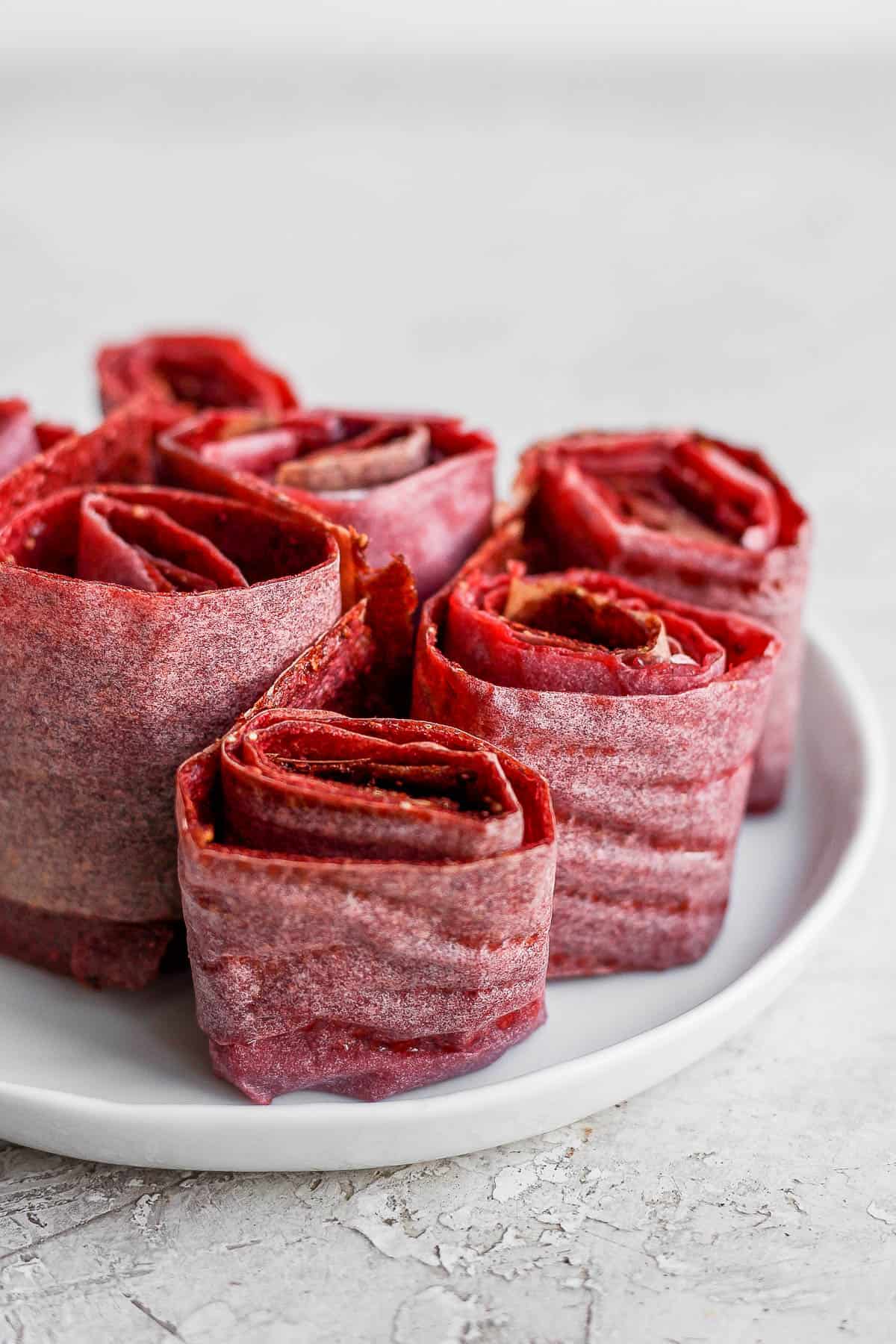
Homemade fruit leather needs a long time in the oven, making it a perfect weekend or rainy day undertaking.
WHY learn to make your own fruit leather
- Great project for the littles. Kids love making foods that they like to eat. And the long oven time means this project is a fun lesson in delayed gratification.
- Stops waste. Making fruit leather can make use of extra apple sauce and fruit that is past its prime but still viable. It is also a great way to take advantage of a big haul from visiting a pick-your-own berries farm or apple orchard.
- You control the sweetness. You can add a sweetener or rely on the fruit’s own sweetness, making this a more viable option for diabetics than commercial fruit roll-ups. Make sure to taste the plain puree to judge whether or not your fruit needs more sweetness or not.
- You chose the flavors. Another beauty of homemade fruit leather is that it can be made from one of your favorite fruits or a fun combo. No more searching store shelves for that one you love.
HOW TO MAKE fruit leather
Making fruit leather is like making a smoothie with one extra step. In a blender, you blitz your fruit with lemon juice and any spices or sweeteners and then spread it out on a parchment paper-lined sheet pan. Pop it in the oven and let it dry for hours.
Blend Fruit
- Chop larger fruits into bite-sized pieces. Place the fruit, lemon juice, and sweetener (if using) in a food processor or blender. An immersion blender will work, too.
- Puree until smooth.

Prepare to Bake
- Pour the puree onto a sheet pan that has been lined with parchment paper.
- Use a spatula to spread out the puree evenly and put the sheet pan in an oven preheated to 150°F or your oven’s lowest temperature. Place the pan on the oven’s lowest rack.

Check and Cut
- Cook until the fruit feels dry to the touch. It may be sticky, but it should not be moist.
- To test readiness, see if the dried fruit puree peels away easily from the parchment paper.
- Use kitchen shears or a pizza cutter to cut strips from the leather with the parchment paper still attached.
- The fruit leather strips are ready to be rolled up. Keep the parchment paper attached and you can peel it off right before eating.
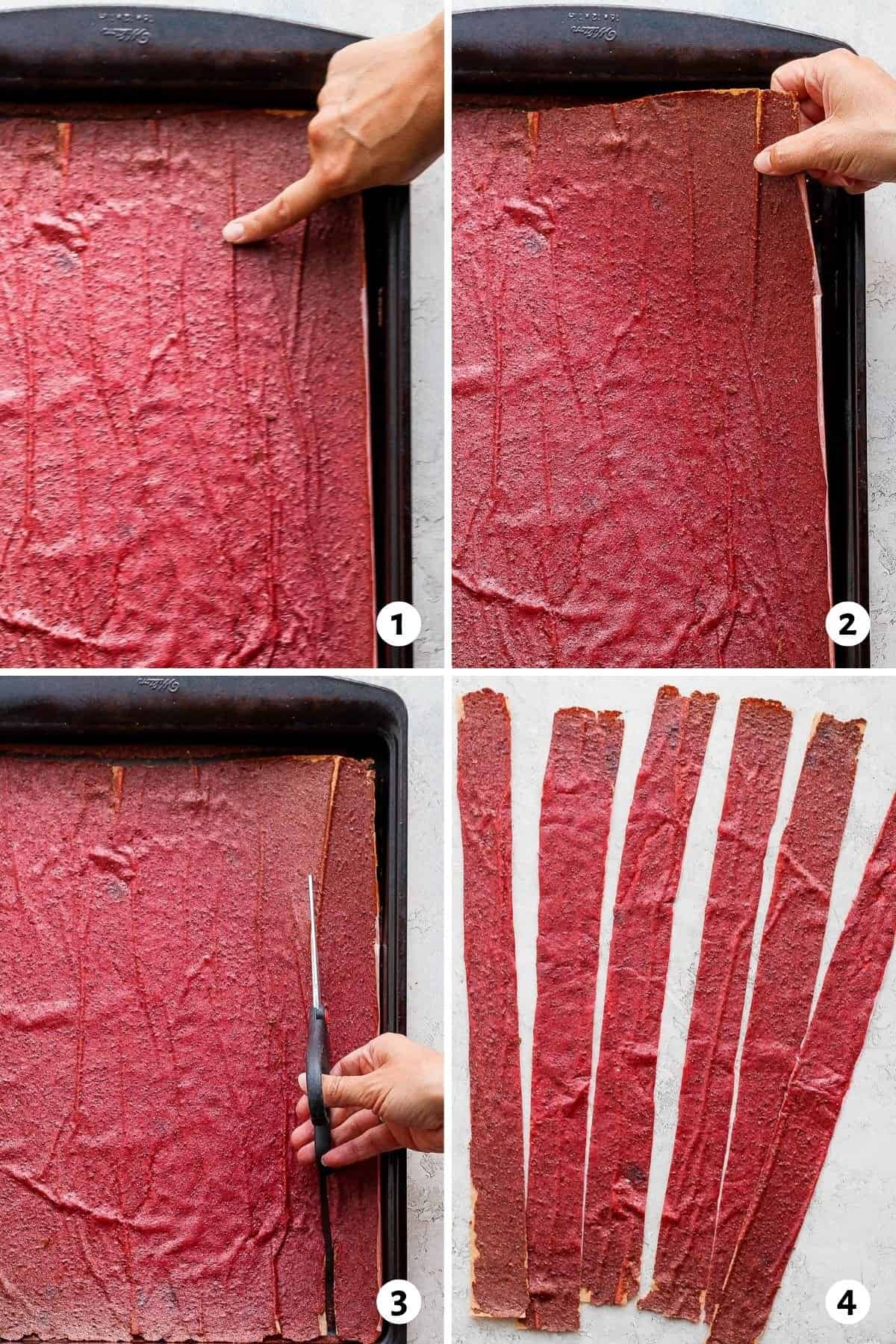
Tips for making homemade fruit leather
- Make sure to tap the baking tray on the counter before baking. Do this a couple of times before placing it in the oven. This ensures that the fruit puree is evenly distributed without any airy pockets.
- Change the thickness of the fruit roll-ups. Make them thinner by cooking the chopped fruit with water for 20 minutes before blending. This results in a smoother and thinner consistency but will take more time. For every 4 cups of fruit, you’ll need ½ a cup of water.
- Try to spread the puree so it’s thicker around the edges. Since the sides dry quicker than the center, it helps to keep the center about 1/8″ inch thickness and the edges a little thicker, about 1/4″ inch.
- Add spices for a change in flavor. Try warm spices like cinnamon, ginger, or nutmeg, and use about ½ a teaspoon for every 4 cups of chopped fruit.

HOW TO STORE fruit leather
Fruit leather is best stored tightly wrapped in the refrigerator. Theoretically, homemade fruit leather is shelf-stable at room temperature, but any slight moisture left can make it mold.
HOW LONG WILL homemade fruit leather LAST?
Homemade fruit leather is good for a month. Tightly wrapped, it can be frozen for up to a year.
FREQUENTLY ASKED QUESTIONS
Yes, let frozen fruit thaw at room temperature until the fruit feels soft, and then puree it. Keep in mind it might take an extra 2-4 hours to dry out though, since frozen fruit contains more moisture than fresh fruit.
Yes, canned fruit can be used to make fruit leather. Drain it well to get rid of excess moisture and juice. Like frozen fruit, it may take a few more hours to dry out in the oven than fresh fruit because of added moisture.
I steer clear of plastic wrap in the oven to avoid the harmful chemicals that can leach onto foods, and I like that using parchment paper creates a wrapper for the snack. But, Silpat mats made from food-grade silicone are an option. Be careful not to slice the mat when cutting the leather into strips!
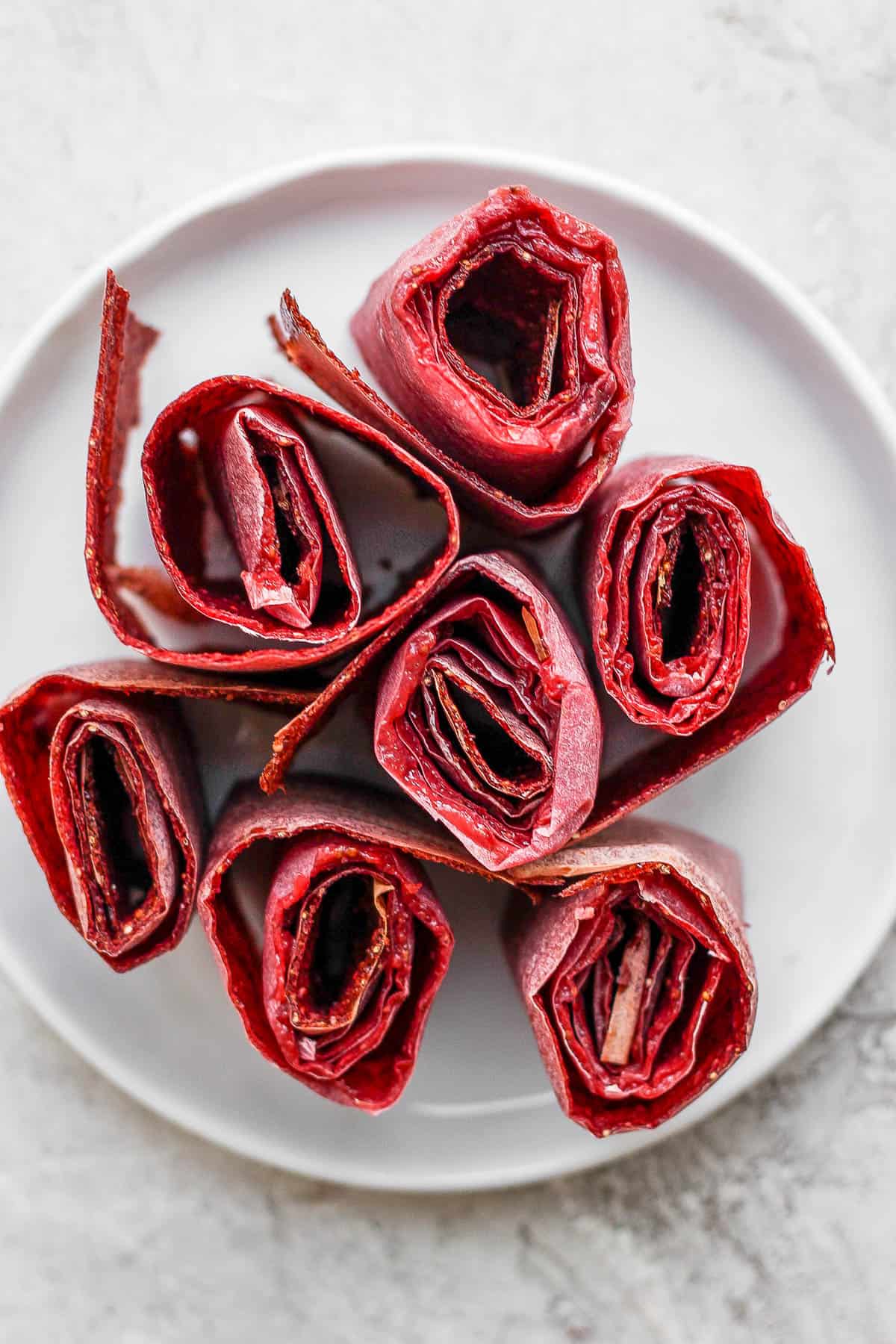
Making your own fruit leather is a way to take a popular snack and make it super healthy. It is also thrifty and fun!
MORE helpful fruit tutorials:
- How to Cut a Pomegranate
- How to Cut a Peach
- How to Cut a Pineapple
- How to Cut a Kiwi
- How to Cut a Watermelon
- How to cut a melon
If you found this tutorial for How to Make Fruit Leather helpful, or if you try any recipe on Feel Good Foodie, then don’t forget to rate the recipe and leave a comment below! It helps others who are thinking of trying out this tutorial, and we would love to hear about your experience. And if you snapped some shots, share it on Instagram so we can repost on Stories!

How to Make Fruit Leather
Ingredients
- 4 cups fruit chopped (apples, berries, peaches, pears)
- ½ teaspoon lemon juice
- 1-2 tablespoons sweetener of choice optional
Instructions
- Preheat the oven to 150F or the lowest temperature your oven will go, and line a 11 x 17 rimmed baking tray with parchment paper.
- Place the fruit, lemon juice and sweetener (if using) in a food processor or blender and puree until the mixture is smooth.
- Pour the puree onto the lined baking tray, spreading out evenly using a spatula.
- Place on a low rack in the oven and cook until the fruit feels dry to the touch and peels easily from the parchment paper, about 6-8 hours.
- Remove from oven and allow the fruit leather to cool completely, at least one hour.
- Use a pizza cutter, knife or scissors to cut into thin strips with the parchment paper still intact. The parchment paper will carefully peel off when you’re ready to enjoy them.
Notes
Nutrition
Nutrition information provided is an estimate. It will vary based on cooking method and specific ingredients used.
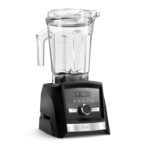
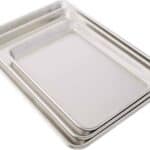

This is a great way to use up left over fruit. Going have to try this one
Let me know what you think once you give it a try!
Can you use dried fruit, like dried apricots, to make fruit leather? My father, who is long gone, used to like apricot leather. If it worked, it would bring back good memories.
Also, can your recipes be cut down for one or two servings?
Thanks.
I have yet to try using dried fruit for fruit leather! You can try making it with fresh apricots though. In the recipe card, where it says Servings, you can move the toggle to 1 or 2 pieces.